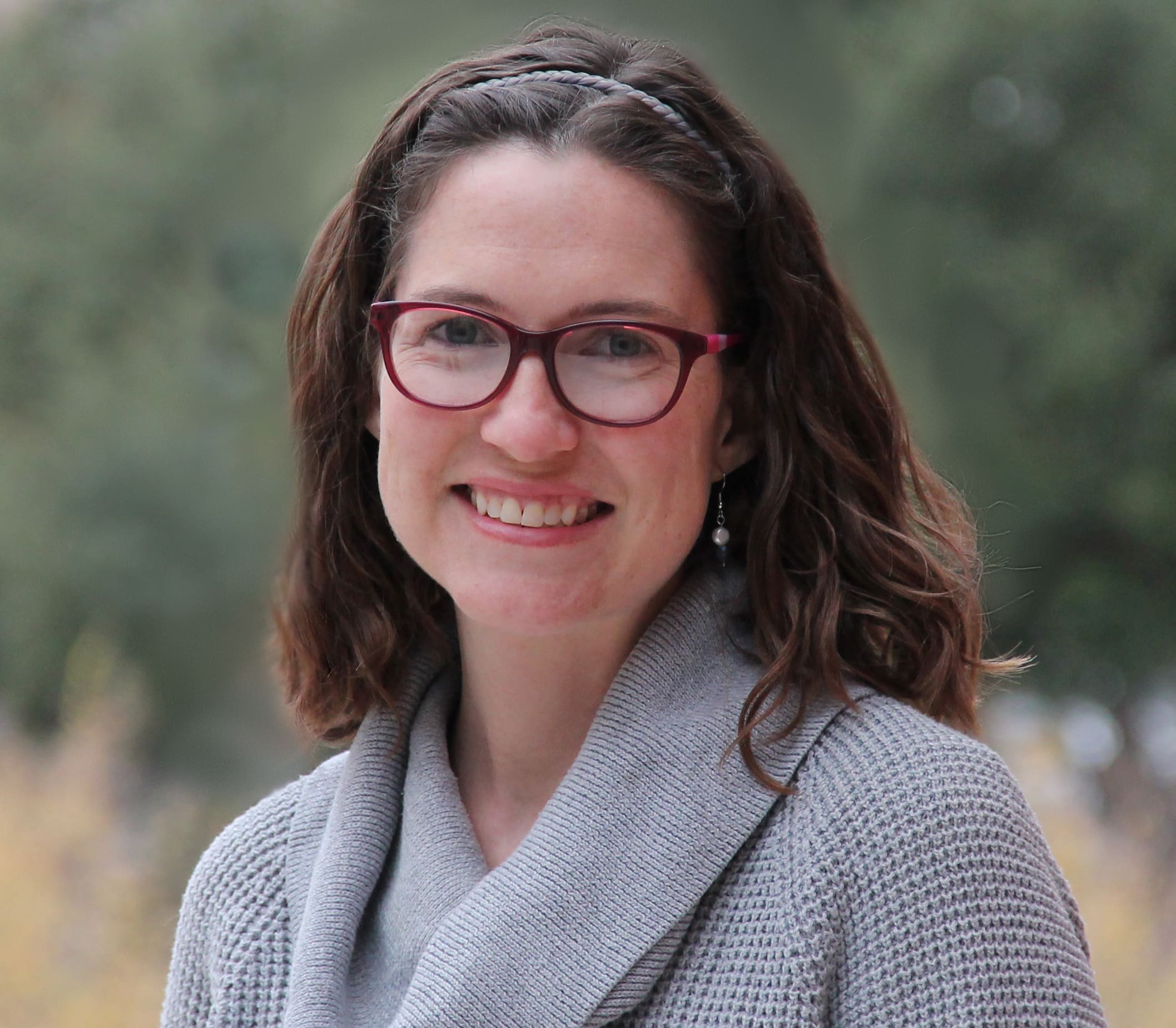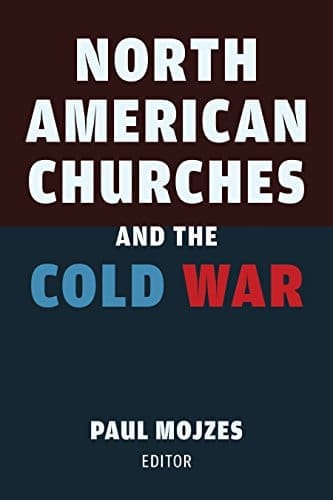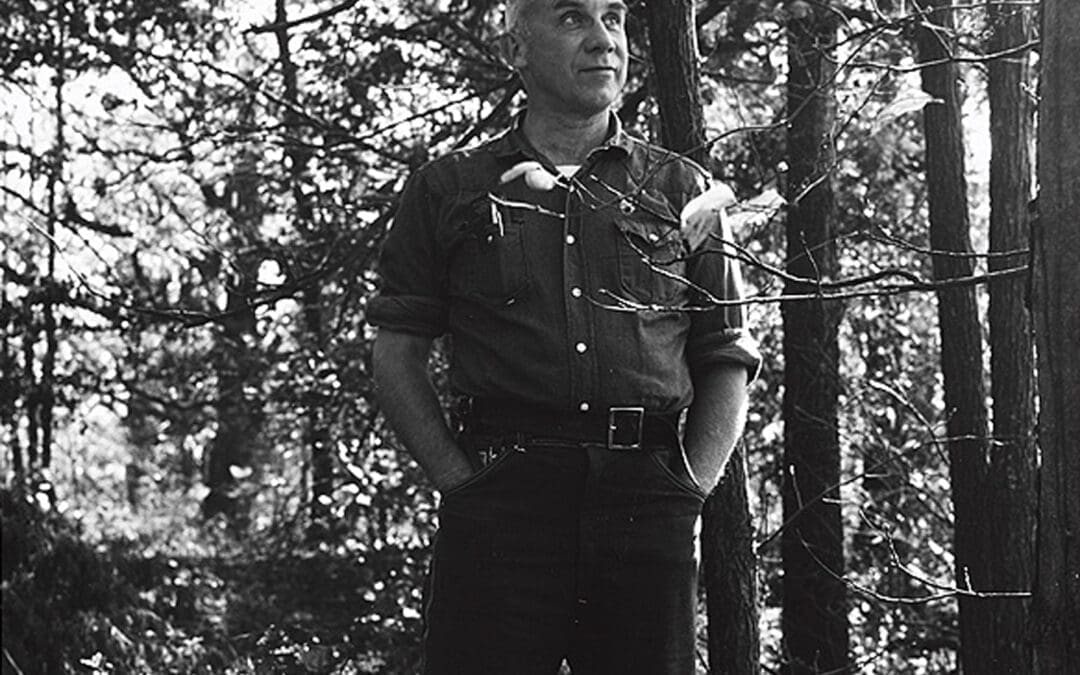As the saying goes, generals are always fighting the last war, applying the strategies that worked—and, frequently, those that didn’t work—in the past to the challenges of the present. Because the six-month first Gulf War hardly counts, the architects of the War on Terror are thus in many ways still fighting the Cold War. As that earlier conflict recedes from living memory (more than a third of Americans now alive were born after the breakup of the Soviet Union), it is growing in importance for historical scholarship. For Christians no less than generals, then, it’s a fruitful time to ask: What did we actually do in the Cold War? Did it work? What should we keep doing, or stop doing, or do very differently in light of what we learned?
My own memories of the Cold War are vivid but simple, like the pages of a colouring book. Ronald Reagan is the first president I recall, and I liked him at the time, as did, seemingly, everyone I knew. When I learned world geography in sixth grade, the maps demarcated the spheres of US and Russian influence, with jagged lines running through Germany and its former capital. When the Berlin Wall came down, my freshman year in high school, my parents kept the TV on through dinner, which never happened otherwise. They couldn’t look away. They were watching the same event I was but experiencing it very differently. I feared nuclear annihilation (still do), but I didn’t inhabit the same implacably bifurcated world, and I didn’t define myself—or my country, or my religion—so thoroughly against a single, existential enemy.
Efforts to reconsider the Cold War as a major event in church history started percolating in worldwide ecumenical circles more than a decade ago. A substantial new edited volume, North American Churches and the Cold War (Eerdmans, 2018), approaches the subject from a variety of perspectives to demonstrate that the colouring book was full of hidden pictures, its hues far muddier than bright red and blue. The contributor biographies alone attest to the range of the book’s voices. In addition to academic titles, the bios include such designations as minister, deacon, chaplain, missionary, moderator, vicar, and Privy Councillor. Most authors wrote from within the religious communities examined in the book’s six sections: Canadian churches, US mainline Protestants, Roman Catholics, Eastern Orthodox, evangelicals, and peace organizations. Many were participants in the conferences, study groups, and exchange trips that feature in their essays; others, particularly the graduate-student authors, based their analysis on archival materials.
Quite appropriately, nothing like a consensus emerges from the thirty separate essays. A lot happened in North American churches between 1947 and 1991. Christians frequently talked past each other or worked directly against each other in those years. Religious communities fractured amid the push and pull of new enemies and possible allies. The biggest force they all had to reckon with, though, was the state, a nuclear armed, eight-hundred-pound gorilla. The fraught relationship between church folks and political power runs through every chapter.
Spoiler alert: whether churches attempted to tame the gorilla, hide from it, or harness its power for their own ends, the gorilla always won.
The Power Players
For most white, North American churches, the Cold War contest was primarily a matter of influence. At the end of World War II, the Protestants who would later be known as mainline clearly had the upper hand. (The term “mainline” was hardly ever used to describe the generally liberal, churchly, ecumenical wing of American Protestantism until 1960, but that wing was identifiable earlier via membership in the Federal, later National, Council of Churches, or in a somewhat different way via affiliation with the United Church of Canada north of the border.) Mainline leaders were the churchmen—and they were practically all men, at the top levels of leadership—who could be confident that a politician would take their call. Their denominational and ecumenical meetings made headlines. Their faces appeared on the cover of Time magazine. The Religious Book Club promoted their books, and the major radio networks broadcast their sermons on the free, “sustaining” time set aside for public-service programming. When they claimed to represent millions of Christians in dozens of denominations, the claim was plausible, if rarely probed.
For these churches, the Cold War trajectory was one of declining influence, and lots of people have offered lots of explanations for why this was the case. NCC executive Dean M. Kelley opened the debate with his 1972 book Why Conservative Churches Are Growing: A Study in the Sociology of Religion, in which he attributed the decay of mainline churches to an excessive focus on social issues and insufficient attention to boundaries between church and culture. Of church mergers and interfaith cooperation, he wrote, “Such ecumenical endeavors may be conducive to brotherhood, peace, justice, freedom, and compassion, but they are not conducive to conserving or increasing the social strength of the religious groups involved or—more important—the efficacy of the ultimate meanings which they bear.” In other words, you could work toward lofty and broadly shared social ideals, or you could grow your church, but you couldn’t do both.
Righteousness is not measured in results, of course, else the prophets and saints were nearly all failures, but claims of influence require some kind of proof.
Some subsequent interpreters, particularly on the conservative side, grounded their assessments in a perceived shift in beliefs, essentially claiming that conservative churches preserved a true, supernatural gospel while the mainline churches settled for a thin gruel of social justice. Other subsequent interpreters, notably sociologist Robert Wuthnow, leaned more heavily on demographic considerations, pointing out that mainline Protestants had lower birthrates than conservative Protestants (or members of several other religious groups), and that it was therefore only natural their church rolls would shrink over time. But Kelley’s basic analysis held, with brotherhood, peace, and the rest understood to be on one side of a seesaw and church growth on the other. Thus mainline Protestants wringing their hands over falling numbers and conservatives warning that social justice was a slippery slope to perdition were both, in their ways, affirming Kelley’s central claim. Push the seesaw one way or the other, and you can predict the result.
Several essays in North American Churches and the Cold War very helpfully add the state to this conversation, offering a potent challenge to Kelley and his heirs. As the essays make crystal clear, the US government from President Harry Truman forward sought to use the churches as instruments for political ends—to mobilize public opinion (and troops) against godless, evil Communism; to sanction the stockpiling of nuclear weapons; to blunt criticism of federal leaders; even to gather intelligence through religious channels. To only a slightly lesser extent, the Canadian government tried this tactic too. According to this book, and speaking very broadly, mainline churches and the United Church of Canada said no to such overtures, while evangelicals in both countries and conservative Catholics said yes. It was this difference in response to the state, more than doctrine or social programs or cultural boundaries or anything else, that set the churches on divergent paths in the second half of the twentieth century.
The contrast is sharpest in the chapter by historian Jill Gill, whose book Embattled Ecumenism is the definitive study of the National Council of Churches during the Vietnam War. In her recounting, NCC leaders still enjoyed visiting privileges in the Washington, DC, halls of power in the 1960s, although they had less weight to throw around than they had in the 1940s. Under Robert Bilheimer, the head of the NCC’s Department of International Affairs starting in 1966, the NCC “not only visited regularly with White House officials and members of Congress; it also spoke with the Selective Service about improving treatment of conscientious objectors, filed numerous amicus curiae briefs in court cases related to the war, testified before Congress, and lobbied candidates for public office about their platforms related to peace.”
Incidentally, this is one of relatively few places where the authors of essays on mainline Protestants, or on peace activists, detail the means by which their figures (sometimes, themselves) exercised political influence. More common are statements like this one, regarding United Church of Canada staff member Bonnie Greene, whose work was, according to author Lois Wilson, “not widely known by ordinary church members even today, but it was an important and essential contribution to peaceful relationships between countries antagonistic to each other.” How, exactly, unknown work that had little discernible impact on international hostilities was “important and essential” is not explained—which doesn’t make the claim untrue, merely, on the evidence given, unverifiable. Righteousness is not measured in results, of course, else the prophets and saints were nearly all failures, but claims of influence require some kind of proof.
Returning to Gill’s essay, Bilheimer and the NCC ran into a brick wall with the Nixon administration. Arthur Flemming, NCC president from 1966 to 1969 and a former member of Eisenhower’s cabinet, brought a delegation to discuss Vietnam strategy with secretary of state Bill Rogers, who had also been on Eisenhower’s staff. Flemming’s group prepared a report, but Rogers didn’t bother to read it. Gill wrote, “Council leaders were stunned by the administration’s dismissive lack of interest in everything except how the NCC might be utilized politically. When the council rejected that possibility, Nixon gave them the cold shoulder and added them to his enemies list.” And there were very real consequences to being on that list—NCC staff members had their phones tapped, came under suspicious scrutiny from the IRS, and got publicly smeared by vice president Spiro Agnew. Meanwhile, evangelicals were being wooed by Nixon’s aide Charles Colson, who described them as “about the most pliable of any of the special interest groups that we worked with.”
Other contributors to the book caution against viewing evangelicals solely as the dupes who swooned when the state came a-courting. German historian Axel Schäfer asserts that “evangelicals enjoyed unprecedented access to the corridors of power” from Billy Graham’s friendship with Eisenhower and through his closer friendship with Nixon and beyond, but that “the direct link between actual policies and evangelical beliefs has been difficult to prove.” Additionally, Schäfer claims that evangelicals both “sanctified the global role of the ‘redeemer nation’” and “remained ardent critics of US Cold War policy,” skeptical about the growth of federal spending, the excesses of the free market, and the racist aspects of American imperialism. Overall, Schäfer deems evangelicals “both accommodationist and adversarial, custodial and marginal, attached to the “New Rome’ and to the ‘New World Israel.’”
Much of the support for Schäfer’s “on the other hand” argument comes from the words of a few evangelical spokesmen, particularly those who wrote for the magazine Christianity Today or who aligned themselves with the small evangelical Left. These men figure prominently in other essays in the evangelical section too. As with church leaders and activists on the mainline side, though, it is difficult to assess the impact of their words. Christianity Today might have called, in 1956, for “‘less emphasis on bombs and materials for war,’ more international disarmament negotiations, and even efforts to strengthen international relations through the UN,” but evangelical opinion was hard to steer, especially with hardliners such as Jerry Falwell pulling in the opposite direction. During the Reagan administration, as examined by historian Jeremy Hatfield, evangelicals basically mirrored the general public’s views on nuclear policy, although they were measurably less supportive of an immediate nuclear freeze, an idea supported by 60 percent of evangelicals, compared with 75 percent of the general public, in a much-debated 1983 Gallup poll. Evangelicals showed far less ambivalence about Reagan as a candidate, backing him as strongly (around 80 percent) in 1984 as they had his fellow Cold Warrior Nixon in 1972.
Schäfer’s assessment seems altogether too rosy in light of white evangelical support for Donald Trump, a development too recent to have factored into Schäfer’s analysis. As a result of evangelicals’ deeper engagement with, and consequently deeper sympathy for, peoples of the global South since the 1970s, Schäfer credits them with “challenging the paternalism of the movement’s American leaders” and becoming more vocal critics of America’s expansionist foreign policy. Considering recent comments such as Jerry Falwell Jr.’s insistence that the rules of the heavenly kingdom simply don’t apply to American power politics, however, one has to conclude either that evangelicals have lately lost their collective minds and morals, or that an accurate portrait of the tradition would have been darker than Schäfer’s all along.
The (Relatively) Powerless
While the US military-industrial complex was picking favourites among the white mainstream churches, other North American Christians were waging smaller, sometimes poignant battles. The Canadian churches featured in the first section of North American Churches and the Cold War faced largely the same choice as their US counterparts—bless the policies of their government, including spying on their own citizens and allowing nuclear tests on their land, or lose influence with both politicians and a generally war-affirming populace. The key difference, for Canadians, was that at least some of them felt “more concern about trigger-happy American nuclear warriors than about the Russians.” Canada’s self-identification as a peacemaker nation (an identification at times more aspirational than actual) did open more room for religiously motivated opponents of war to act than was available to like-minded Christians in the United States. As Canadian churchman James Christie shows, longtime parliamentarian and cabinet minister Lloyd Axworthy helped enact the Land Mines Treaty, establish the International Criminal Court, and promote the idea that nations had a “Responsibility to Protect” all human beings, “the very antithesis of the Cold War doctrine of mutually assured destruction.” The foundation for all of this work was laid in the Winnipeg United Church Sunday school that Axtell’s parents insisted he attend.
The Roman Catholics featured in the book’s third section also faced similar, but different, choices than mainline and evangelical Protestants. As a self-consciously global church, they maintained some critical distance from American nationalism, but their anti-Communism, fuelled by anti-Catholic atrocities in Eastern Europe, proved all too alluring to Truman and his successors. Anti-Communism constituted American Catholics’ path to insider status, writes Cold War historian Dianne Kirby, but at the cost of the state “appropriating the spiritual and moral authority of American churches for the nation.” Repeatedly, this book proves historian Forrest Church’s observation, “When church and state tucked into bed together, it was the church that ended up asking, ‘Will you respect me in the morning,’ and the answer was almost always ‘No.’”
But then there were the true outsiders—African American Protestants and Eastern Orthodox churches in America. The state showed no ardor to get in bed with them. Regarding African Americans, the state just wanted to make nice enough that they wouldn’t decide they could get a fairer deal from the Soviets. Lumping civil rights activists in with Communists as threats to the American way was the primary means by which US politicians kept African Americans onside while acceding to a bare minimum of their demands. Historian Peter Eisenstadt’s chapter, “Howard Thurman, Martin Luther King Jr., the Cold War, the Civil Rights Movement, and Postwar Liberal Black Protestantism,” provides some of the book’s keenest insights on both the Cold War period and America’s ongoing failure to live up to its creed. Thurman observed that white Americans tended to notice black Americans only in times of national crisis, such as World War II. At such a time, a black citizen felt that “the future of democracy was dependent on him. For one breathless, swirling moment he became conscious of being a part and parcel of the very core of the nation.” A case could be made that black Americans and black churches, with figures such as Rev. William Barber in the vanguard, are fighting crucial battles for the nation again in the twenty-first century, simultaneously emboldened and threatened by their essentially adversarial position vis-à-vis the state.
Unless church connections could function as tunnels under the Iron Curtain, the American state mostly wanted the Eastern Orthodox to go away. Dellas Oliver Herbel’s eye-opening chapter shows how the Orthodox fought—ultimately in vain—for federal recognition of their status as a church, first so that their clergy could be exempted from Selective Service, and later so that they could serve as chaplains and participate in public ecumenical events. Their most pointed opposition came from the rabidly anti-Communist fundamentalist Carl McIntire, in one of the book’s clearest cases of Christian infighting. Although he didn’t single-handedly block the effort for Orthodoxy to be recognized as the country’s fourth major faith, McIntire and the spirit of McCarthyism “created a mountain Judiciary refused to climb.”
Where these essays relate the doings of bygone activists and partisans, laced with dozens of acronyms of ecumenical organizations, they are primarily of historical interest—valuable, but not to a large audience. Where they counsel resistance to the embrace of the state, they could not be more relevant and timely. And where they make the reader hear the voices crying in the wilderness, or feel the burdens borne by Christians oppressed by their capitalist or Communist overlords, they force a reckoning with the question posed by former missionary Charles West: “What is responsible Christian witness in situations such as these?”



